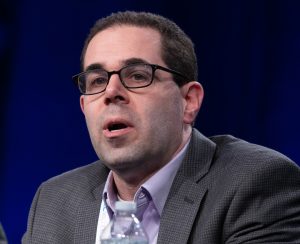The State of Live Production: IP Is Here, HDR and REMI Are on the Rise, Personalization Is Key
Panelists from ARRI, Amazon Prime Video, MTVG, and NEP expect a major technological shift over the next decade
Story Highlights
Over the past decade, live production has seen gradual change in the technologies and workflow used to deliver sports, concerts, and other big events to viewers. Today, with the maturation of IP-based production tools, the rise of 4K and HDR, the increasing popularity of the at-home/REMI centralized production model, and the explosion in direct-to-consumer OTT services, the industry may see a seismic shift in the coming decade.
At the HPA Tech Retreat last month, executives from ARRI, Amazon Prime Video, Mobile TV Group (MTVG), and NEP took the stage to discuss the latest trends in live production and where they see this rapidly changing sector headed.
NEP and MTVG Commit to IP-Based Trucks
NEP has fully committed to an IP future based on the SMPTE ST 2110 suite of video-over-IP standards. The facilities provider now has 12 IP trucks worldwide, six IP-based control rooms, and several IP-based flypacks. Although NEP is blazing the IP trail for live production, the end-to-end IP ecosystem has not yet arrived, and the industry remains in a transition period.
“We’re still accounting for a lot of SDI and SDI distribution,” said Scott Rothenberg, SVP, technology and asset management, NEP. “That has been a challenge for us [in terms of] fitting everything inside the truck and meeting all the needs [of our customers] and all the different formats that we need to [deliver]. The scale and flexibility of IP have helped us build toward the future; however, there [is more] complexity [in terms of] interoperability. … Some of the things that we just assumed would work because they are part of our everyday [SDI] workflows didn’t work out-of-the-box with IP.”
However, he also noted that the move to IP and more IT-centric workflows has made it difficult for NEP to find and retain quality engineers.
“Training of the engineers, finding engineers, and keeping engineers has been a challenge,” he said. “Now we find ourselves sharing talent not only with other mobile providers but also with all of the high-tech companies. We find more software developers being needed in our business, and retaining talent has been a continued challenge.”

MTVG Nick Garvin on REMI production: “Technologically, we’re there. You can have anything anywhere.”
Mobile TV Group also has made a firm commitment to IP and is completing its third end-to-end native-IP mobile unit based on ST 2110. 47Flex will serve the new Marquee Sports Network’s Chicago Cubs game productions this season, and the company’s 48th truck — another IP version — is already in development.
“Yes,” said MTVG COO Nick Garvin, “there might be some SDI [equipment in the truck], of course, but all of the major systems within those mobile units are connected [via] native IP.”
Live 4K HDR Production on the Rise
In addition to IP-based efforts, MTVG is making the move to 4K HDR production.
“4K HDR in the live environment is totally routine for us; we do it on a regular basis now,” said Garvin. “This past fall, Altitude Sports decided that all of their Denver Nuggets and Colorado Avalanche home games were going to be 4K HDR. We needed only a little bit of time to convert the mobile unit to accommodate that.”
Evolution of At-Home Production Continues
Rothenberg also spoke about the growth of the at-home/REMI production and how NEP sees it evolving in the coming years.
“It’s largely not a technical problem; it’s actually a commercial and cost problem,” he pointed out. “Connectivity is not the same cost everywhere. In Australia, where we do thousands of events in a REMI style, it works for geographical reasons and cost of connectivity. In the U.S., it’s going to be a little more complicated. Will it happen? Absolutely. Are we going to be sitting here next year talking about how there are no more TV trucks running around? Absolutely not. I think some events will [move to REMI] and other events won’t.”
Garvin seconded that sentiment, noting that, although centralized productions will continue to proliferate, different live events require different production workflows.
“Technologically, we’re there,” he explained. “On the production side, you can have anything anywhere. We’ve been able to test that and accommodate those requests. But, when we think about production innovation, we don’t think just about technology; we’re also focusing on workflow innovation.
“When we first started down the road of cloud production,” he continued, “we thought everyone was going to be doing their production out of their basement. And that is possible. When internet became a [standard] household item, everyone thought they were just going to be able to work from their basement. But it turns out that there are non–technology-related benefits of being in an office together. That’s something that we’re still discovering and working on. We think the answer is that, like all things, it’s a balance. There are different tools for different jobs.”
Personalization Will Play a Major Role
Although virtual graphics, such as the 1st-and-Ten line, have been staples of live sports coverage for more than two decades, the use — and sophistication — of these augmented-reality elements has grown exponentially over the past few years. Felicia Yue, senior manager, product management, Amazon Prime Video, sees these virtual-production tools as a valuable way to create a more personalized viewing experience for fans.
“Increased personalization is really important to OTT platforms like Amazon,” she said, “because we are not tied to this decades-old model where a single producer creates a one-size-fits-all program feed that is then beamed out to millions of homes. We have the ability to give our customers the capability to toggle things on and off.”

Amazon Prime Video’s Felicia Yue sees “a future in which we are allowing sports fans to watch the game they want the way they want.”
One of the foremost examples of Amazon’s personalization efforts is the addition of the company’s X-Ray technology during its live streaming of Thursday Night Football. Originally developed for VOD content, X-Ray brings some of the same Next Gen Stats previously available only to coaches and announcers to all TNF fans on demand, on every play, and at their fingertips. Viewers can pull up such metrics as a quarterback’s average time to throw, a running back’s average yards after contact, and a wide receiver’s average yards of separation — all enabled through Next Gen Stats’ real-time player tracking. Available on Android, iOS, and Fire TV, the mobile experience allows users to bring up and dismiss real-time stats by simply flipping their phones. To access X-Ray, fans tap the “Stats by X-Ray” button on their phone or tablet or click ‘up’ on the Fire TV remote control during the game.
In addition, Amazon Prime Video also offers multiple audio options for the TNF streaming experience. Users can choose between the Fox broadcast with Joe Buck and Troy Aikman or an alternative broadcast featuring Hannah Storm and Andrea Kremer or another with UK announcers Derek Rae and Tommy Smyth. Additionally, Amazon Prime members in the U.S. and Mexico have access to Fox Deportes, the exclusive Spanish-language broadcast.
“This is just the start,” said Yue. “I think it does speak to a future in which we are allowing sports fans to watch the game they want the way they want.”
Cinelive Brings the Cinematic Style to Live Production
Outside the sports realm, the panel addressed the increasing popularity of live-cinema multicam production. This style of production brings large-format cameras from the cinema side into live production for live streaming of concerts, awards shows, theater, and other high-profile events. Recent live-cinema multicamera efforts include-streaming productions of Coachella, the ASC Awards, and a Billie Eilish concert at the Greek Theatre last summer.

The Landmark Group/ARRI’s Ron Williams on live-cinema production: “[The customers] don’t want it to look like video, but they also want to do camera cuts and stream it live.”
ARRI and MTVG are backing a new venture, Wide+Close, that shoots live-streamed music performances with film cameras and cinematographers to give the content a more cinematic feel. MTVG and other mobile-facilities providers, including NEP, increasingly receive requests for mobile units on live-cinema projects.
“Cinelive is an exciting side project for us. More and more of our clients are requesting large-format cine cameras,” said Garvin. “Our clients are able to achieve a different look with these large-format cameras, and we’re seeing a small uptick in demand for that.”

